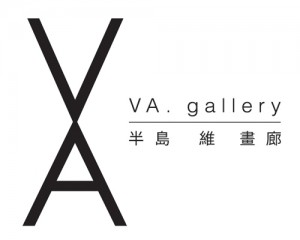Time Out, Hong Kong
Interview: Au Hoi-lam
The Hong Kong-based painter talks to Edmund Lee about her fascination with the slow passage of time, and the aesthetics of girly drawings. Sweet, gentle and contemplative, Au Hoi-lam looks every part the maker of her own paintings. Having recently finished her post-grad research thesis on the late work by French philosopher Michel Foucault focusing on the topic of ‘Care of the Self’, the artist is now turning to examine the notions of time, dreams and life experience in her latest solo show Definitions of Time. At once girly, meticulously crafted and deeply philosophical, Au’s new work continues the painter’s concern for the personal, while demonstrating her usual level of technical delicacy and immense patience. In Handkerchief 86400, for instance, she has drawn exactly that amount of tiny coloured squares to represent the number of seconds in a day.
How do you usually find inspiration for your artwork? I take my inspiration from actual experiences in my personal life, and seldom from social happenings, politics, or global issues, like environmental protection. I know these feelings may seem trivial, but at the same time I think these ideas can be shared by the viewers once I turn them into paintings.
Why did you pick ‘time’ as your exhibition topic? My initial idea wasn’t to tackle a topic as huge as ‘time.’ What I wanted to do with my paintings was to simply capture the deliberate passage of time. When we’re chasing after our dreams, [we feel that] time flows extremely slowly – almost as if it is itself waiting for something to happen. And I especially like the kind of music that seems to be perpetually prolonging time. I’m planning to accompany the [exhibition] opening with the fugues of Bach. [Laughs] They fit the mood of my paintings really well.
Handkerchiefs and the dimmed colours of the rainbow are the two major elements of this group of work. To me, handkerchiefs are full of implications whether they appear in artworks, as props in movies, or as gifts to others. They give an intimate feeling: they’re either folded up and put in your pocket or, in the very old-fashioned movies, presented as mementos. They inspire imaginations and evoke memories. On the other hand, rainbows remind me of dreams. They’re beautiful yet illusory. They are a permanent phenomenon yet ephemeral in nature. Also, I want to make the colours look faded and aged.
Few artists in Hong Kong concentrate exclusively on painting. Why do you choose to stick to this medium? I think it’s the medium that makes me feel most comfortable. I like it that I can do it with my own hands, and can finish [a work] all by myself. People do ask me sometimes why I’m only focusing on painting. The thing is, I don’t find it monotonous at all. I’m happy.
The drawing in some of your work is quite girly in style. That’s true. Recently, I’ve been thinking about that too. [Laughs] Sometimes, the lighter colour tones in my work can create that kind of impression. Looking at it from another perspective, these types of paintings – and not just those by me – regularly manage to give out delicate and intimate feelings.
The human figures in your work remind me of children’s doodling. Some of my friends say that they look very naïve.
What do you think about this particular drawing style? It’s not that I can only draw in this simple manner, but that’s the way I draw. [Laughs] If you take a quick glance, you’d think that they’re drawn by little children; but if you look closer, you’ll see that although they give a sense of naivety, they’re obviously drawn by an adult. There’s that special feeling they give out.
Has this drawing style presented any obstacles to your career as an artist? I understand what you’re getting at. It depends on who you’re targeting with your paintings. For me, I haven’t [had a specific audience] in mind. I realise that the more mature viewers may not be as enthusiastic with my works, which may remind them of illustrations or comics. But as long as I’m happy with my paintings, I’m not going to worry about it.
Have you been drawing at home since you moved out of your Fo Tan studio in late 2008? Yes, I draw at home. All [the paintings] you’re seeing here were drawn at home.
Does that mean you have a very big apartment? My home isn’t big. I can hardly walk when I have to let the larger paintings lie down horizontally [on the floor]. When I draw, I’m also using the ironing board to support the canvas. [Laughs] I’m finding it quite interesting, actually. When [I had a studio] in Fo Tan, it felt a bit like I was going to work. I was totally isolated from the world then – even though I’m enough of a hermit [just by] working at home now.
So what’s next for you? I’ll continue to paint, and begin trying out other media, like photography. Another thing is – like you’ve just mentioned – about the very girly expression in my work. I’m thinking about doing some research on this type of artist. [Laughs] It may take the form of a piece of writing, a book, or an exhibition.

